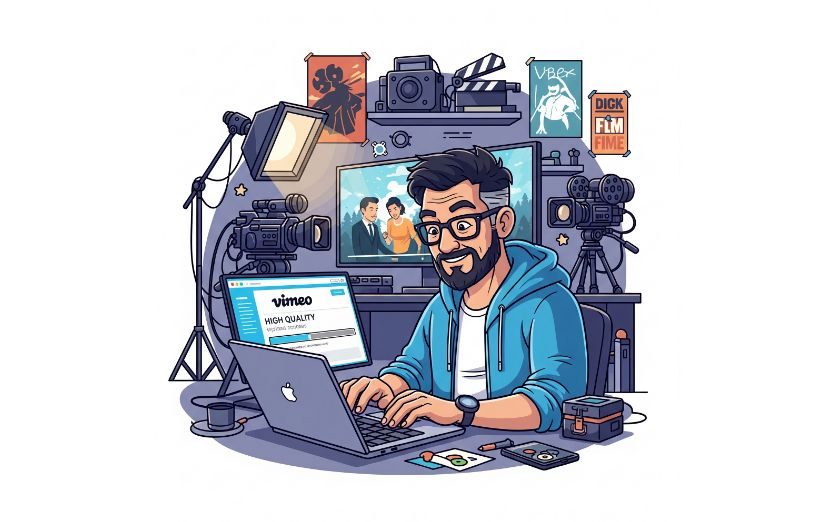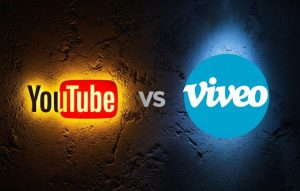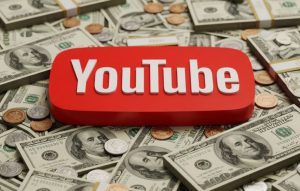In a world dominated by YouTube, many creators ask a simple yet important question: What is Vimeo mostly used for? Is it just a smaller, less popular version of YouTube, or does it serve a completely different purpose? If you’re a filmmaker, a business owner, or a creative professional, understanding the answer can unlock a powerful new platform for your work.
Let’s get straight to the point. Vimeo is primarily used as a **professional video hosting platform for creators who prioritize quality, control, and an ad-free experience.** Unlike YouTube’s focus on mass entertainment and viral content, Vimeo is a curated space for high-quality video content, from independent films to corporate training materials.
What is Vimeo mostly used for? The Short Answer
While YouTube is a social media giant built on advertising, Vimeo is a Software-as-a-Service (SaaS) company. This fundamental difference shapes its entire purpose. Vimeo provides the tools for creators to host, share, and monetize their work on their own terms. It’s less about going viral and more about delivering a premium viewing experience to a specific audience.
The Core Use Cases: Who Thrives on Vimeo?
The answer to “What is Vimeo mostly used for?” can be found by looking at its community. Three main groups have made Vimeo their platform of choice:
- Filmmakers and Creative Professionals: Independent filmmakers, animators, and videographers use Vimeo as a high-quality portfolio. The platform’s superior video and audio quality ensure their work is displayed as intended. They often care about presentation, asking questions like “does vimeo allow vertical video uploads without black background?” to perfect their uploads.
- Businesses and Marketers: Companies use Vimeo to host marketing videos, product tutorials, and internal training materials. The ad-free player and advanced embedding options allow them to present their content professionally on their own websites without YouTube recommending a competitor’s video at the end.
- Educators and Online Course Creators: Vimeo’s advanced privacy controls and domain-level security make it the perfect choice for hosting paid video courses. Creators can ensure their content is only accessible to paying customers on their own site.
For more on the business side of video platforms, industry resources like Forbes Business often analyze their strategic differences.

Vimeo vs. YouTube: A Tale of Two Different Missions
To truly understand Vimeo’s purpose, it’s best to compare it directly with YouTube. They are both video platforms, but their missions couldn’t be more different.
| Aspect | Vimeo | YouTube |
|---|---|---|
| Primary Model | SaaS (Subscription for creators) | Media/Advertising (Free for creators) |
| Audience | Niche, professional, filmmakers, businesses | Mass market, general public, entertainment-focused |
| Core Goal | Provide high-quality tools and hosting. | Maximize views and ad revenue. |
| Monetization | Direct sales, subscriptions (VOD). Creator-funded. | Ad revenue sharing. Advertiser-funded. |
The monetization difference is a key point. We explore this in our detailed guide, How Much Does Vimeo Pay Per 1000 Views?, which explains why Vimeo’s model is not based on view counts.
Key Features That Define Vimeo’s Purpose
Vimeo’s feature set is built to serve its professional user base. These tools are what truly define what the platform is used for.
- Advanced Privacy Controls: The ability to password-protect videos, restrict embedding to specific domains, and create private projects is essential for businesses and client work.
- Player Customization: Creators can change the player’s colors, add their own logo, and control what buttons appear. Learning how to save player setting in vimeo? is key to creating a branded experience.
- High-Quality Playback: Vimeo is known for its superior video and audio compression, delivering a better viewing experience for high-resolution content.
- Collaboration Tools: Features like time-coded notes allow teams to collaborate on video drafts seamlessly. Knowing how to export vimeo transcript can also be a huge help in the review process.
These features are analyzed in-depth by many leading tech review sites like TechRadar Pro.
Is Vimeo the Right Choice for Your Video Content?
Deciding if Vimeo is right for you comes down to your primary goal.
- If your goal is maximum reach, virality, and earning through ads, YouTube is your platform.
- If your goal is to showcase high-quality work in a professional, ad-free environment, protect your content, or sell it directly to an audience, then Vimeo is the superior choice.
For those who choose Vimeo for its professional presentation, knowing practical tips like How to Embed a Vimeo Video in PowerPoint? can be incredibly useful. And if you do want to boost the visibility of your public Vimeo videos, a targeted Vimeo SMM panel can provide initial views and likes to build social proof. For broader needs, the cheapest SMM panel can offer a variety of services to get you started.

Frequently Asked Questions (FAQ)
1. Can a normal person use Vimeo, or is it only for businesses?
Anyone can use Vimeo! While it’s known for its professional tools, its free and basic plans are great for anyone who wants to share videos in a high-quality, ad-free environment, such as for family videos or personal creative projects.
2. Can my videos be discovered on Vimeo like on YouTube?
Yes, if your video is set to “Public,” it can be discovered through Vimeo’s search, categories, and curated channels. However, Vimeo’s audience is smaller and more niche than YouTube’s, so the potential for massive viral discovery is lower.
3. Do I have to pay to use Vimeo?
No, Vimeo offers a free plan with basic features and limited storage. However, to access the advanced privacy controls, player customization, and monetization tools that the platform is known for, you will need to upgrade to one of their paid subscription plans.







